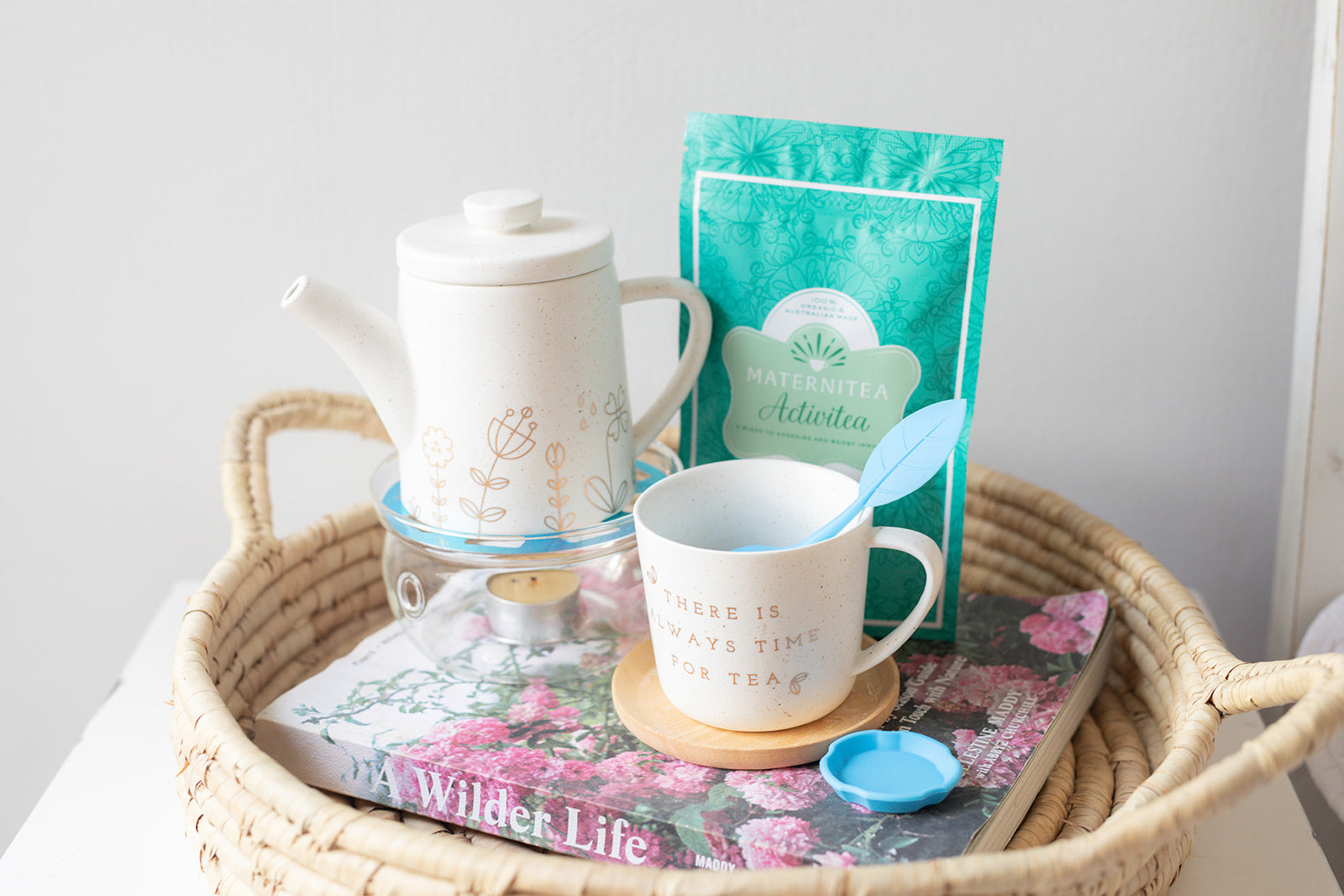The Mummy Tummy – Diastasis Recti

Ever heard the term “Mummy Tummy”? Chances are it’s referring to the bulge or bump some of us Mums are left with following the incredible feat that is- bringing a new little human into the world.
Generally it’s caused by a condition called Diastasis Recti and up to 60% of women will experience it!
WHAT IS DIASTASIS RECTI?
Its the partial or complete separation of the rectus abdominis, better known as the “six-pack” muscles, which meet at the midline of your stomach.
The condition is very common during and following pregnancy and the reason is all thanks to your growing uterus, pushing out and stretching the muscles in the abdomen to make way for your growing baby.
It’s thought that up to 60% of women may experience diastasis recti to some degree during pregnancy or postpartum.
WHAT CAUSES IT TO HAPPEN?
During pregnancy, your abdominal muscles and connective tissues are stretched out from your expanding uterus. The condition is helped along by the pregnancy hormones relaxin and oestrogen, which cause your muscles to soften and relax, stretching more easily.
You might be more likely to develop diastasis recti as a result of pregnancy if you have carried multiples or a large baby to term and are of small stature or are age 35 or older.
WHAT DOES IT LOOK LIKE?
During pregnancy, you might not have any noticeable symptoms as your abdominal muscles separate.
However, during the second or third trimester, you might notice a bulge or ridge developing on your stomach. It can appear above and below the bellybutton.
You may not notice it until you’re trying to use your ab muscles to stand, sit up, or lie down.
During PostPartum, you may find the most noticeable symptom is a bulge or “pouch” in your belly area. It may cause you to still look quite pregnant, even though you have already given birth weeks prior.
There are a number of ways you can check for signs of Diastasis Recti yourself after your baby is born:
Step One:
Lie on your back, legs bent, feet flat on the floor.
Step Two:
Raise your shoulders up off the floor slightly, supporting your head with one hand, and look down to your tummy.
Step Three:
Move your other hand above and below your bellybutton, and all along your midline abdominal muscles. See if you can fit any fingers in the gaps between your muscles.
Step Four:
If you can feel a gap, with separation of one to two finger lengths, you likely have a moderate case of diastasis recti. After a few weeks postpartum, the gap should start to narrow as your muscles regain strength however, for many women with Diastasis Recti, further specialist treatment may be required.
Your doctor, midwife or physical therapist may also examine you to check for diastasis recti in the days following the birth. They can use a measuring tool called a caliper or an ultrasound to give them a more accurate measurement of the extent of separation.
ARE THERE ANY OTHER SYMPTOMS?
Diastasis recti can weaken your abdominal muscles, which can cause lower back pain, poor posture, constipation and bloating, while also making it difficult to lift and complete regular daily routines.
DOES IT GO AWAY ON ITS OWN?
Most women will experience some form of abdominal separation during pregnancy. This can weaken your core and lead to back or pelvic pain. You may need to wear a supportive aid during the day such as binder or belly band.
For some women, diastasis recti may simply correct itself after delivery when the abdominal muscles rebuild and regain strength.
If you’re still experiencing symptoms of separation eight weeks postpartum, consult your physiotherapist to provide you with some at home exercises that may help.
Treatment for diastasis recti postpartum usually involves pelvic floor and deep stomach muscle exercises.
Some women will opt for surgery to reconnect the separated tissue and muscles if the bulge bothers them cosmetically. Talk to your specialist first to see what your options are.
WHAT CAN I DO DURING PREGNANCY TO HELP?
1: Avoid any heavy lifting or further straining of your abdominal muscles until after you deliver.
2: Practice good posture.
3: Support your lower back when sitting with a pillow placed behind you or use an ergonomic chair.
4: Bend your knees, roll, and support yourself with your arm when getting in or out of bed, or standing up off the floor. Do not try to use or strain your abdominals to do this.
5: Practice pregnancy-safe, core strengthening exercises daily. This includes your pelvic floor exercises.
POSTPARTUM
Try to avoid the following:
Avoid traditional crunches, sit-ups, and planks postpartum until your abdomen is healed from diastasis recti. These exercises can make the condition worse.
1- Any exercises where your abdominal muscles are bulging out or under pressure
2- Carrying your baby or other children on your hip
3- Lifting or carrying heavy loads, such as groceries, children, luggage, laundry baskets
4- Coughing without supporting your abdominal muscles
MaterniTea's range of pregnancy and postpartum tea blends are designed to support, nourish, heal and restore the body.
Professionally developed by a team of naturopaths, Dietitians, Exercise Physiologists and Certified Australian Tea Master. Check out the range today. MATERNITEA RANGE






